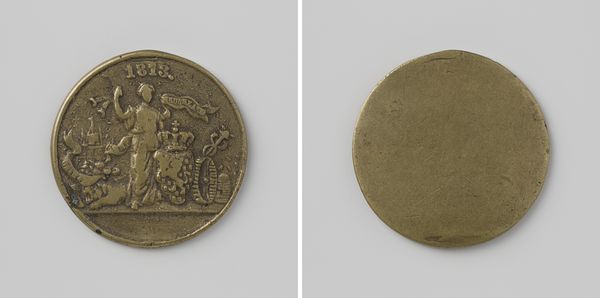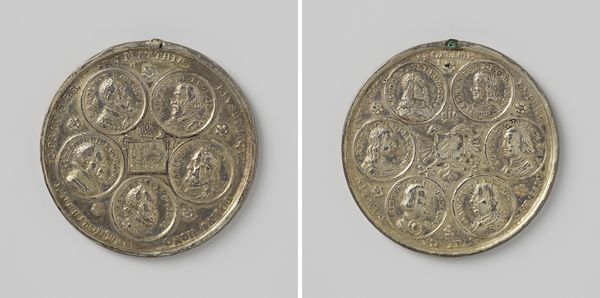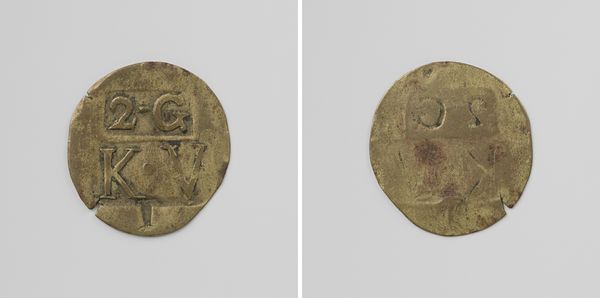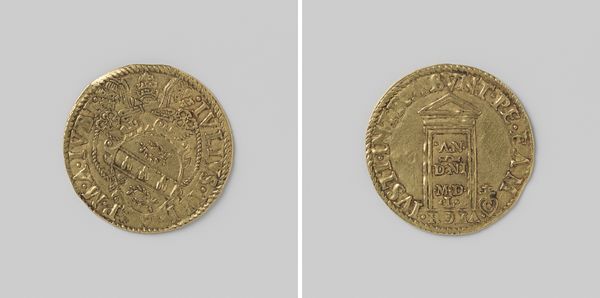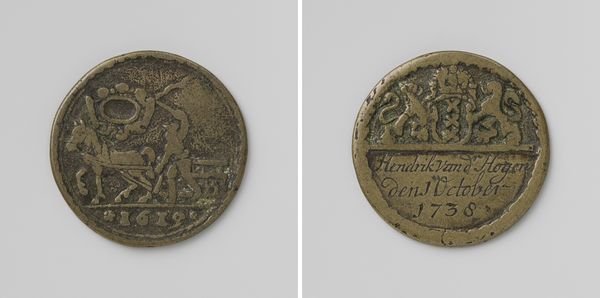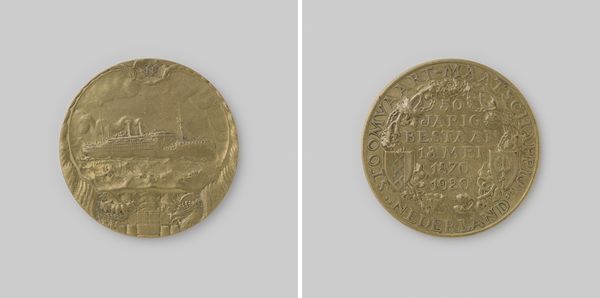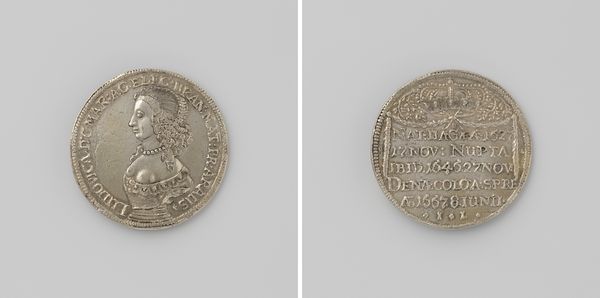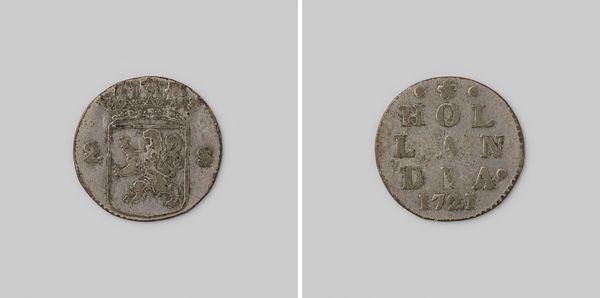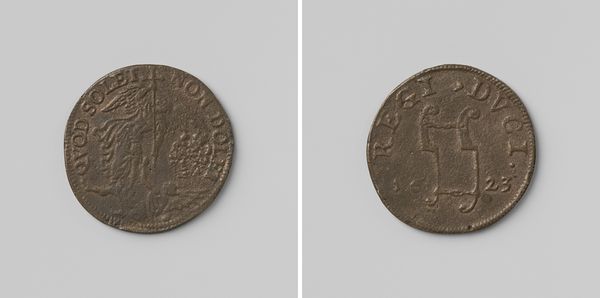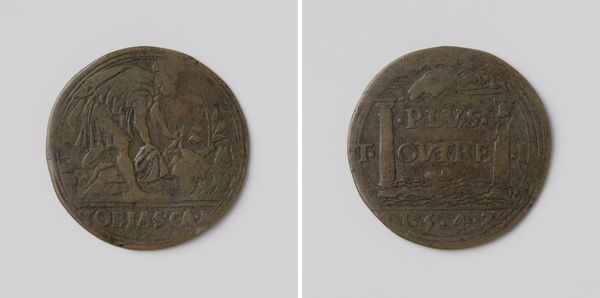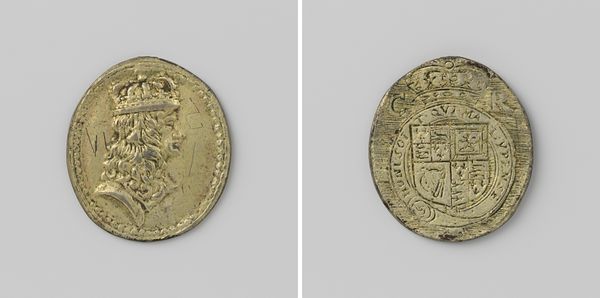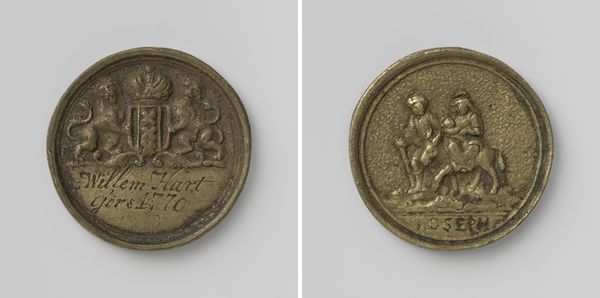
metal, relief, bronze
#
medieval
#
dutch-golden-age
#
metal
#
relief
#
bronze
#
decorative-art
Dimensions: diameter 2.8 cm, weight 6.63 gr
Copyright: Rijks Museum: Open Domain
Editor: This is a bronze guild badge dating back to around 1652. It was crafted for the Amsterdam bakers' guild by Henderick Woutersen. It’s small, but dense with symbols. What’s your take on it? Curator: Well, let's not just admire the bronze, let’s think about what it *represents*. Guilds in 17th-century Amsterdam weren't just about baking; they were also power structures, regulating access to professions and impacting social mobility. Who had access, and who didn't? Who controlled the ingredients? Editor: That's true, I see two sides; on the obverse, what looks like the Woutersen family crest with two lions; on the reverse is the Baker near the oven… Curator: Exactly, but it's more than meets the eye. Think about the labor involved. Who were the bakers? Consider the political landscape: Amsterdam, during the Dutch Golden Age, profited immensely from global trade. What raw materials fueled the bakers' craft and at what cost? Flour was essential and supply controlled wealth. Editor: I hadn't thought about that. So, this seemingly simple guild badge represents a complex system of power and labour. The tools on the medal are like coded language about who had access. Curator: Precisely. Look closely - each emblem tells a story, both of creation and exclusion. Who was writing this history and for whom? Editor: It is thought provoking to look at art as not only art for art's sake but to think about art and intersectional themes, the art, identity, gender, race and politics... Thank you. Curator: Yes, let's use art to uncover unseen forces! By thinking critically, we give these beautiful objects a new voice.
Comments
No comments
Be the first to comment and join the conversation on the ultimate creative platform.
